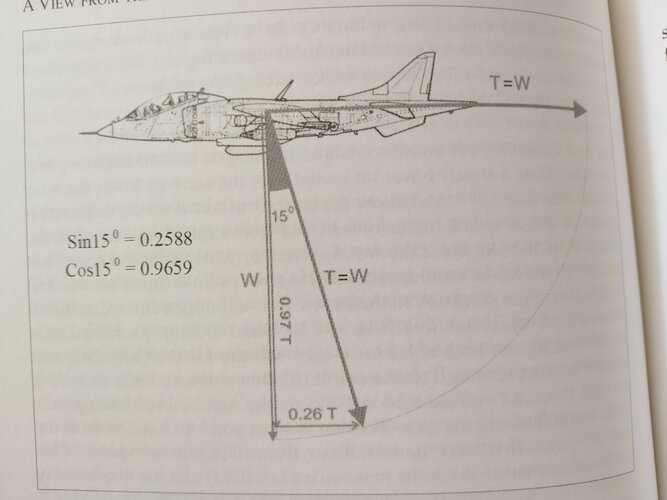Owens Z
quaerimus scientiam
- Joined
- 6 October 2023
- Messages
- 26
- Reaction score
- 37
I was re-reading my copy of the fine book British Secret Projects: Hypersonics, Ramjets & Missiles by the noted Chris Gibson and Tony Buttler (Midland, 2007) recently. On pages 160 through 162, the authors discuss British (paper) studies from the 1960's about weight and drag reduction by jet deflection for a highly supersonic or hypersonic aircraft. That is, a high-speed aircraft with thrust vectoring nozzles (or thrust-vectoring paddles abaft the nozzle a la X-31) would vector the engine thrust somewhat downward for the entire trip; this added lift from the thrust allowing the aircraft to be designed with a substantially smaller wing, and therefore a lighter wing that gives less drag. Thus a jet-deflection aircraft would, the studies concluded, have a longer range than a conventional aircraft.
Previously the only times I have ever heard about jet deflection are for its brief use to enhance a fighter plane's agility in combat, or brief use to slow a plane's takeoff and landing speeds, to land safely on a very short runway (or vertically), so this was news to me. The authors discuss a Gloster Meteor successfully refitted in 1953 with deflection gear, and jet deflection for the unbuilt Saunders Roe P.177 and Westland M.148, but those were all to help land more slowly. I have of course heard about pivoting nacelles, vectoring nozzles, upper surface blowing, blown flaps, etc., to help landings and takeoffs, but never about continually deflected thrust to extend range in high-speed cruise.
I suspect that the Brits' math was off somewhere, and that the costs of a continually downward thrust would outweigh the benefits of a smaller, lighter, less-draggy wing (or, as the authors mention, a less-draggy wing incidence). To my knowledge, no vehicle has since been designed for jet deflection cruise. But have any of you heard of this interesting matter outside of the 2007 Gibson/Buttler book? What do you all think about jet deflection for long-range high-speed cruise being designed today from the start into, say, a new supersonic business jet? Or a hypersonic reconnaissance plane? Would it indeed result in longer range? Please comment.
Previously the only times I have ever heard about jet deflection are for its brief use to enhance a fighter plane's agility in combat, or brief use to slow a plane's takeoff and landing speeds, to land safely on a very short runway (or vertically), so this was news to me. The authors discuss a Gloster Meteor successfully refitted in 1953 with deflection gear, and jet deflection for the unbuilt Saunders Roe P.177 and Westland M.148, but those were all to help land more slowly. I have of course heard about pivoting nacelles, vectoring nozzles, upper surface blowing, blown flaps, etc., to help landings and takeoffs, but never about continually deflected thrust to extend range in high-speed cruise.
I suspect that the Brits' math was off somewhere, and that the costs of a continually downward thrust would outweigh the benefits of a smaller, lighter, less-draggy wing (or, as the authors mention, a less-draggy wing incidence). To my knowledge, no vehicle has since been designed for jet deflection cruise. But have any of you heard of this interesting matter outside of the 2007 Gibson/Buttler book? What do you all think about jet deflection for long-range high-speed cruise being designed today from the start into, say, a new supersonic business jet? Or a hypersonic reconnaissance plane? Would it indeed result in longer range? Please comment.

